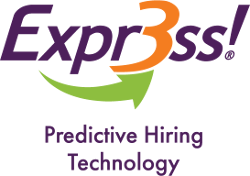Where to start? What to include? How and when you present your case will be key to success

If you have encountered issues within your current recruitment processes and have found that adopting recruitment software will eliminate these, it may be time to construct a business case in order to gain approval for the integration of this software.
The way in which you present your case to higher management will determine whether or not your software solution will get the green light to go ahead!
Here are 6 steps that you should take when preparing your business case for recruitment software adoption.
1. Do your research
Before you take your pitch to higher management, you want to ensure that you know exactly what your current recruitment issues and needs are, and what your options are in terms of software adaptation to solve them.
You need to clearly define a problem statement to emphasise to senior management the drawbacks that your current system places on your department’s efficiency and performance.
For example, if you are spending too much time manually screening through job applications, when you could be spending your time on more pressing and important tasks, outline this in your problem statement.
Emphasise just how much time and resources are wasted conducting menial repetitive tasks, and highlight the software solutions you have researched that will address this.
When an automation solution can complete up to 45% of repetitive work, it allows employees to focus their attention towards tasks of higher importance such as problem solving and decision making.
The average corporate job opening attracts 250 resumes, so if you have multiple roles that you are hiring for, this number can quickly add up!
By adopting a recruitment software, you will be able to screen and shortlist hundreds, if not thousands of applications within a matter of minutes. One of the biggest questions you can expect to be asked when pitching for recruitment software adoption is “how will this create better results than our current process?”, so clearly stating your drawbacks and justifying how adopting a recruitment software can eliminate these will benefit your business case.
2. Be aware of potential limitations
In addition to researching solutions to your current recruitment needs, be prepared to answer questions surrounding the potential risks and concerns associated with adopting a recruitment software.
It should be expected that senior management will question these limitations, so if you are already cognisant of these, it will help to solidify your business case.
For example, eight out of ten companies struggle to successfully adopt HR technology. However, this is often due to a lack of preparation, training and change management amongst employees and other stakeholders.
Take this into consideration when developing your business case for recruitment software adoption.
Acknowledge the risk of unsuccessful implementation and outline what you plan on doing to avoid this. Discuss how you propose to implement the software, as well as how you plan on training end-users and incentivising the adoption of the new recruitment method.
Change management is an ongoing process, so your business case must concede with this. Above all else, it is important to be realistic about these potential drawbacks and solutions!
3. Cost-Benefit Analysis
Developing a cost-benefit analysis is arguably the most important component of your business case to get approval for recruitment software adoption.
If one of the concerns raised around potential limitations is the cost of implementing this software, the cost-benefit analysis will be a great tool to include as it will help to objectively justify why adopting this software is more worthwhile than your current system.
At Expr3ss!, we encourage all of our prospective customers to utilise our free Recruitment Wastage and Savings Calculator as an additional tool for their own cost-benefit analysis of implementing predictive hiring technology for recruitment.
First, you will need to establish the metrics that you will use to illustrate the costs and benefits of adopting a recruitment software. Naturally, the direct monetary costs associated with purchasing and deploying the software will be included here, as well as the time costs associated with learning the new system and training others to use it effectively.
However, you may also wish to include certain metrics such as the cost-per-hire for your current recruitment process versus what the cost-per-hire would be if you had this software installed.
Comparing the amount of time taken to shortlist and appoint a new hire, as well as the retention rates of new hires are some other metrics that can be useful to compare in your cost-benefit analysis.
The purpose of the cost-benefit analysis is to highlight the fact that while there will be some costs involved in the implementation of a recruitment software, the benefits will far outweigh these.
For example, McKinsey has found that the benefits of automating business processes through software adoption are typically between three and ten times the cost of adopting these processes to begin with.
Improved reliability as well as higher quality and speed of departmental performance are just some of the benefits that McKinsey emphasises.
4. Return on Investment
Once you have listed all of the foreseeable costs and benefits of implementing a recruitment software, you should then calculate the return on investment (ROI) of adopting a recruitment software.
Your research may yield descriptive data on how recruitment software can save you time and money in the long term, but a simple ROI calculation will add quantitative evidence to help you further highlight this to senior management.
The ROI calculates the amount you can expect to gain from taking this investment, expressed as a ratio of the foreseeable costs and gains of this investment. It is achieved using the following equation:

The gain of investment is essentially all of your “benefits” from the cost-benefit analysis put into a dollar amount. For example, when discussing the amount of time a recruitment software will save during recruitment activities, calculate how many hours you currently spend completing these tasks using your current process, and multiply this by the hourly wage cost of having an employee action this. This will give you the gain of investment in terms of wage costs.
McKinsey has found that software solutions tend to have a minimal marginal cost, which often makes them much cheaper than the cost of wages, so you should often expect to see this highlighted by your return on investment calculations.
Once you have continued to calculate all of the foreseeable gains of investment you would expect from having a recruitment software in place, you can then do the same for all of the foreseeable costs involved in deploying and maintaining this software.
The ROI is an important tool for assessing the profitability of investing in a recruitment software over time. As such, you should consider drafting multiple ROI calculations to highlight the return on investment at different time points.
For example, you will most likely find that the return on investment straight after deploying a recruitment software may be significantly poorer than the return on investment after 1 year of having the software, and again after 3 years and so forth.
This is generally due to the fact that when you first deploy a recruitment software, the initial installation costs and training costs involved are higher than the maintenance costs in the long run. So this should be taken into consideration when presenting a return on investment in your business case.
Establishing the ROI for different time points will also help to highlight exactly when senior managers can expect to see these returns come to fruition.
It is also important to be modest with the costs, so as to represent a realistic image of what senior management can expect to happen to their bottom line.
In every business case, it should be noted that your ROI calculation should yield a positive number. If your result is negative (e.g. less than zero), it demonstrates that your investment will actually diminish profitability in the long run (which will not help your business case!).
This is why doing your research prior to constructing your business case is essential, as you should have already researched which solution should yield a positive return on investment!
5. Choose the right time
If another global pandemic strikes and your business faces numerous challenges including employee layoffs (looking at you COVID-19!)… it is probably not the right time to bring up the investment of recruitment software, as in this instance, you will simply not be recruiting.
The whole point of Strategic Human Resource Management is to place the right people, in the right place, at the right time. So you have to be realistic about what the business’ priorities are at a given time point.
However, if your business has since adjusted to the blow that COVID-19 has caused (as an example), and you now need to start thinking about the most effective and efficient way to ease operations back to the new normal, then timing your recruitment software pitch to this will be influential in getting your business case approved.
With restrictions easing, businesses re-opening, and new positions being created, now may just be the perfect time to emphasise your business case for why recruitment software is vital to your HR functions at this point in time.

According to the Australian Bureau of Statistics, Australia has seen a 59.4% increase in job vacancies in the month of August 2020 since May 2020, the private sector alone has seen a 65.4% increase in this time.
However, the unemployment rate is still sitting at a high 6.9%, with 937,400 people looking for work as of September 2020. This signifies that while job vacancies are increasing, applications are as well.
Following the labour force trends is an essential component of being able to forecast your recruitment strategies and requirements, this emphasises the fact that timing is key here, as the employment trends we are seeing today are vastly different to the trends we saw back in May 2020.
In other words, trying to pitch a recruitment software adoption back in May 2020 may have resulted in a negative response from senior management, whereas timing your pitch to compliment current recruitment trends and business needs will receive a much better reaction.
6. Be aware of the budget
Just as you need to consider the timing of your business case, you also need to be cognisant of the budget at your disposal. Proposing recruitment software adoption will often involve an additional cost for the business, and even though your return on investment and cost-benefit analysis will outline that this cost is lower that what you will currently pay in the long term, senior managers may only focus on the money that they will have to outlay now, should you go ahead with your adoption.
You may need to be prepared to reduce costs in other areas within your budget in order to highlight to senior management that the additional cost of recruitment software adoption is feasible within the current budget guidelines.
In a survey conducted on 800 Chief Financial Officers and Senior Finance Executives from around the world, The Economist Intelligence Unit found that finance departments collaborate the least with Human Resources departments in terms of managing business costs, driving business strategies and planning business operations.
Instead, conversations between finance and HR departments tend to focus primarily around employee salaries and benefits (57%), and training and development initiatives (56%).
With finance departments seeming to have minimal interest in HR functions, it is essential to pose your business case for recruitment automation in their language.
This yet again emphasises the importance of referring back to your cost-benefit analysis and return on investment calculations as these provide an insight into the company’s bottom line and provide quantitative evidence that the finance department will want to see
Overall, by illuminating the issues and/or obstacles that you currently face within your recruitment activities, and providing precise research and recommendations into how recruitment software adoption could improve these, senior management will be hard pressed to dispute your business case.
By demonstrating that you have conducted cost-benefit analyses and return on investment calculations, you will be able to prove the financial viability of adopting a recruitment software.
Finally, and arguably most importantly, timing your business case correctly and being cognisant of the business’ current priorities and budgets can make or break how your business case will be received.
Following these tips can help you successfully prepare your business case to get approval for recruitment software adoption.
